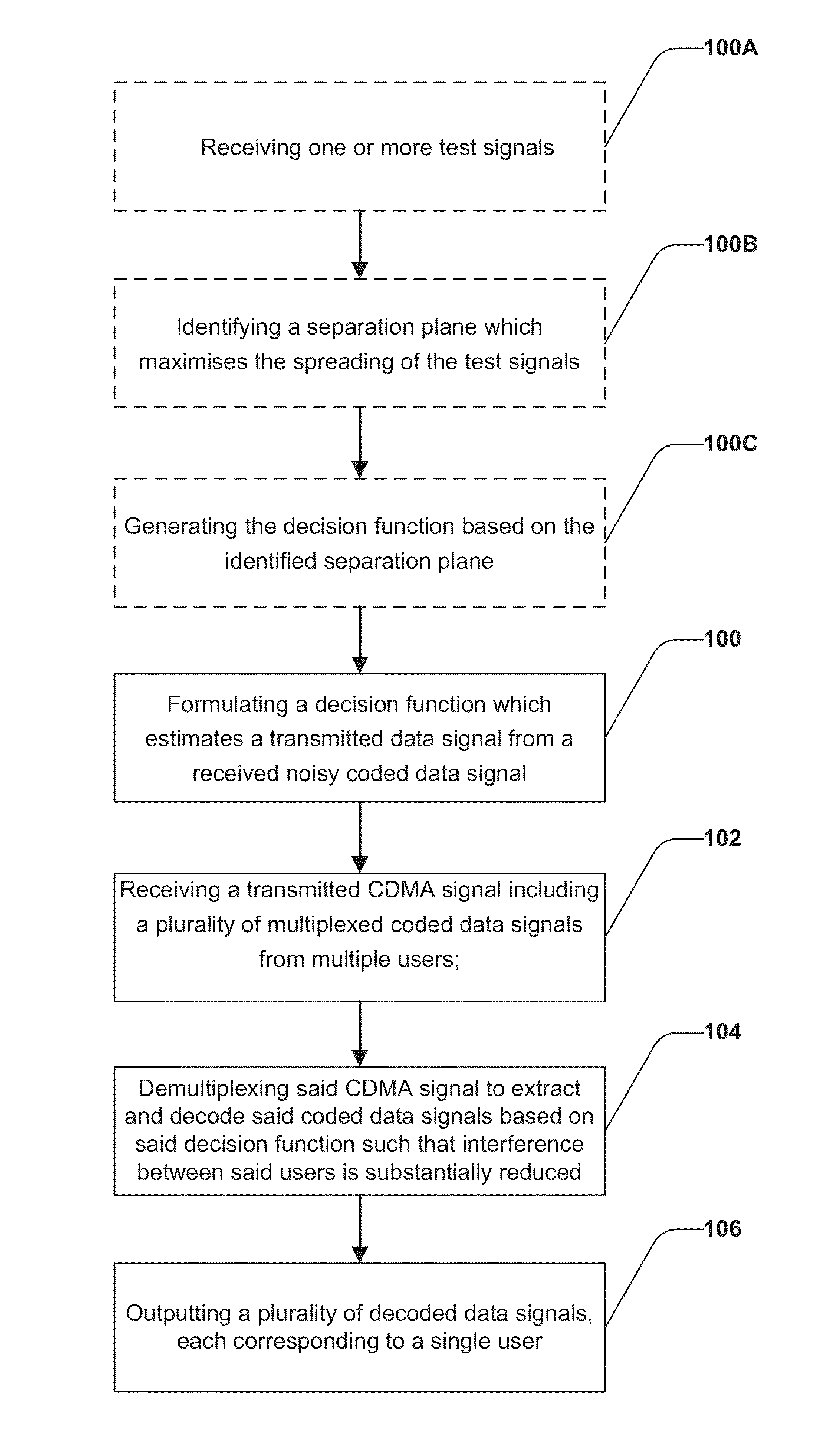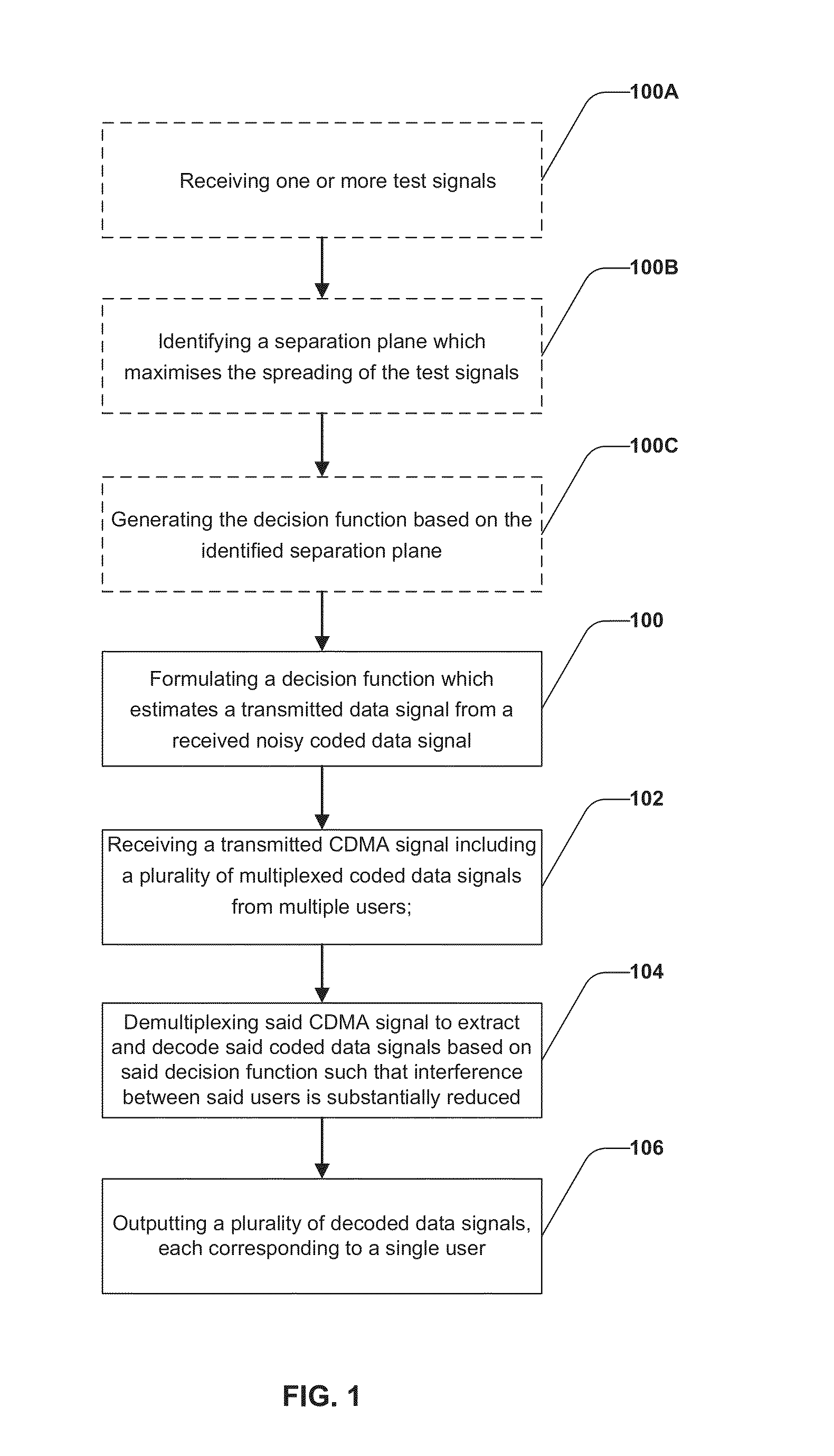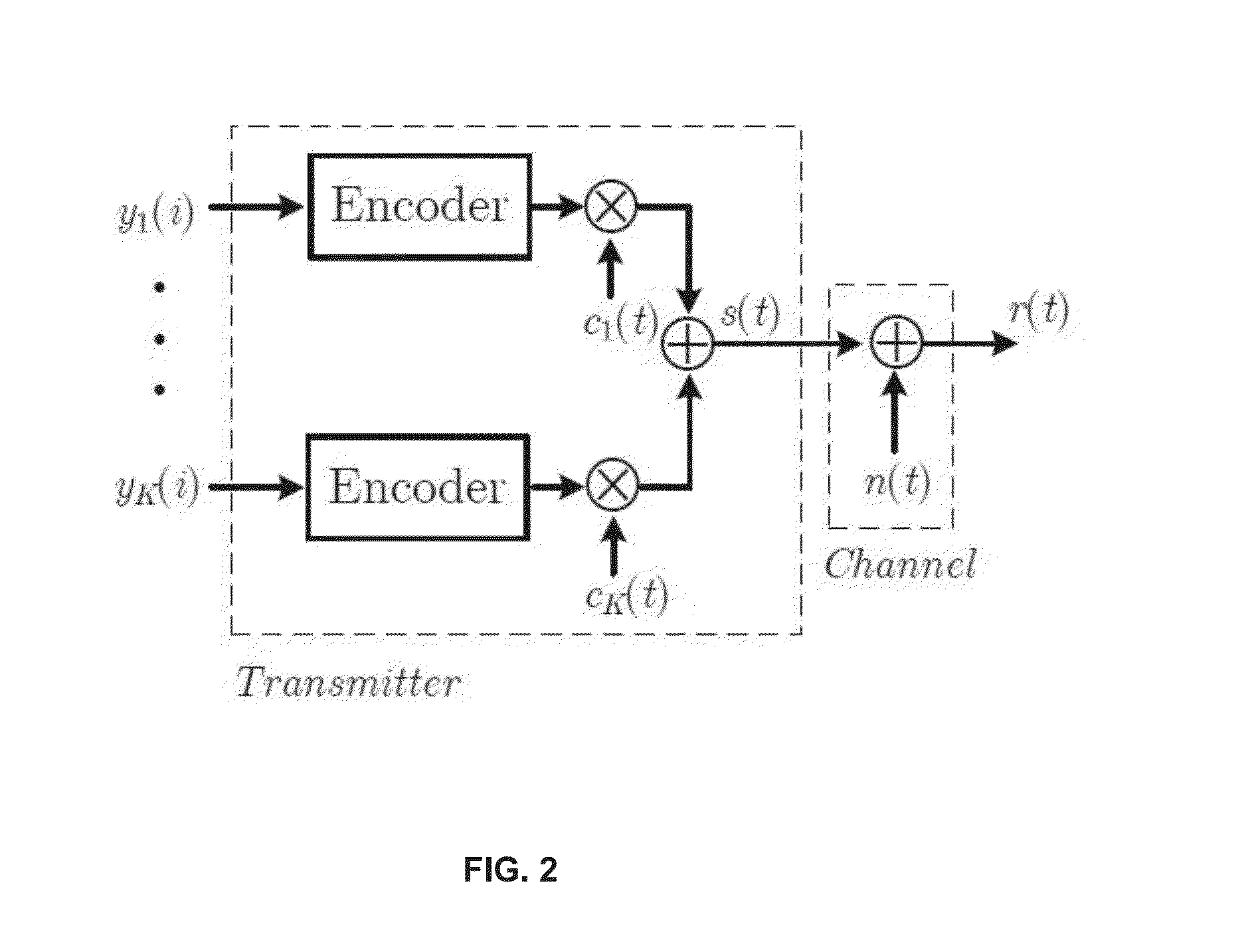Systems and methods for data communications using soft-decision and support vector machines
a data communication and support vector machine technology, applied in the field of systems and methods for receiving data in a code division multiple access (cdma) telecommunications system, can solve problems such as performance degradation, methods cannot be applied in down-link, and multi-access interference (mai) is worsened
- Summary
- Abstract
- Description
- Claims
- Application Information
AI Technical Summary
Benefits of technology
Problems solved by technology
Method used
Image
Examples
example implementation
of the Invention
[0064]As an example to illustrate the performance of the proposed invention, a simulator of a DS-CDMA system which uses non-binary chaotic spreading sequences was designed. The system has 4 users and a spreading factor of 20. A rate ½ convolutional encoder was used at encoding and a standard soft-decision Viterbi decoder was used to decode the received signal from the output of the receiver. The channel consisted of only additive white Gaussian noise (AWGN) with a uniform power spectral density of N0 / 2. A key indicator on the reliability of the system is its bit error rate (BER), which is the probability that a transmitted bit will be in error. In essence, a lower BER is always more desirable than a higher one.
[0065]FIG. 5 graphs the BER comparisons of the two prior art receivers illustrated in FIGS. 2a and 2b with that of the present invention illustrated in FIG. 2c. Firstly, the correlator receiver (of FIG. 2a) would experience an error floor where the BER cannot r...
PUM
 Login to View More
Login to View More Abstract
Description
Claims
Application Information
 Login to View More
Login to View More - R&D
- Intellectual Property
- Life Sciences
- Materials
- Tech Scout
- Unparalleled Data Quality
- Higher Quality Content
- 60% Fewer Hallucinations
Browse by: Latest US Patents, China's latest patents, Technical Efficacy Thesaurus, Application Domain, Technology Topic, Popular Technical Reports.
© 2025 PatSnap. All rights reserved.Legal|Privacy policy|Modern Slavery Act Transparency Statement|Sitemap|About US| Contact US: help@patsnap.com



